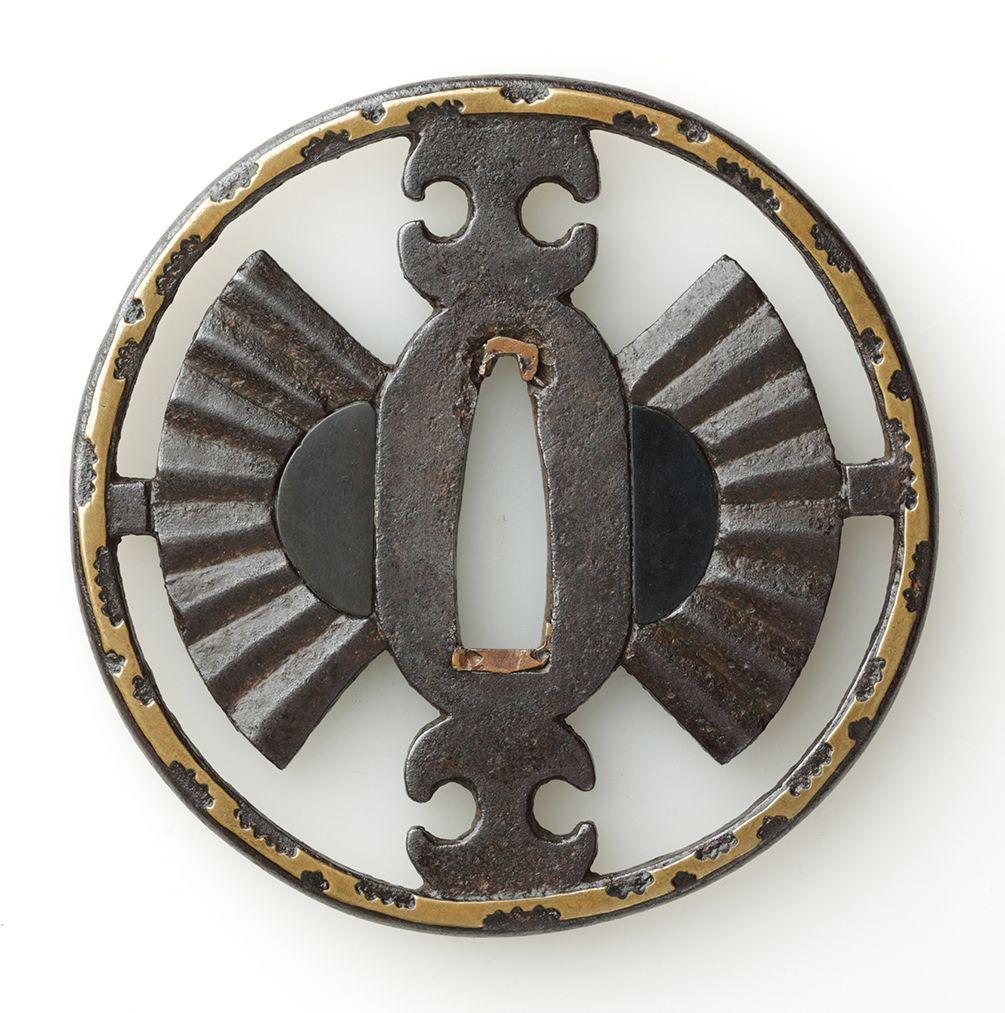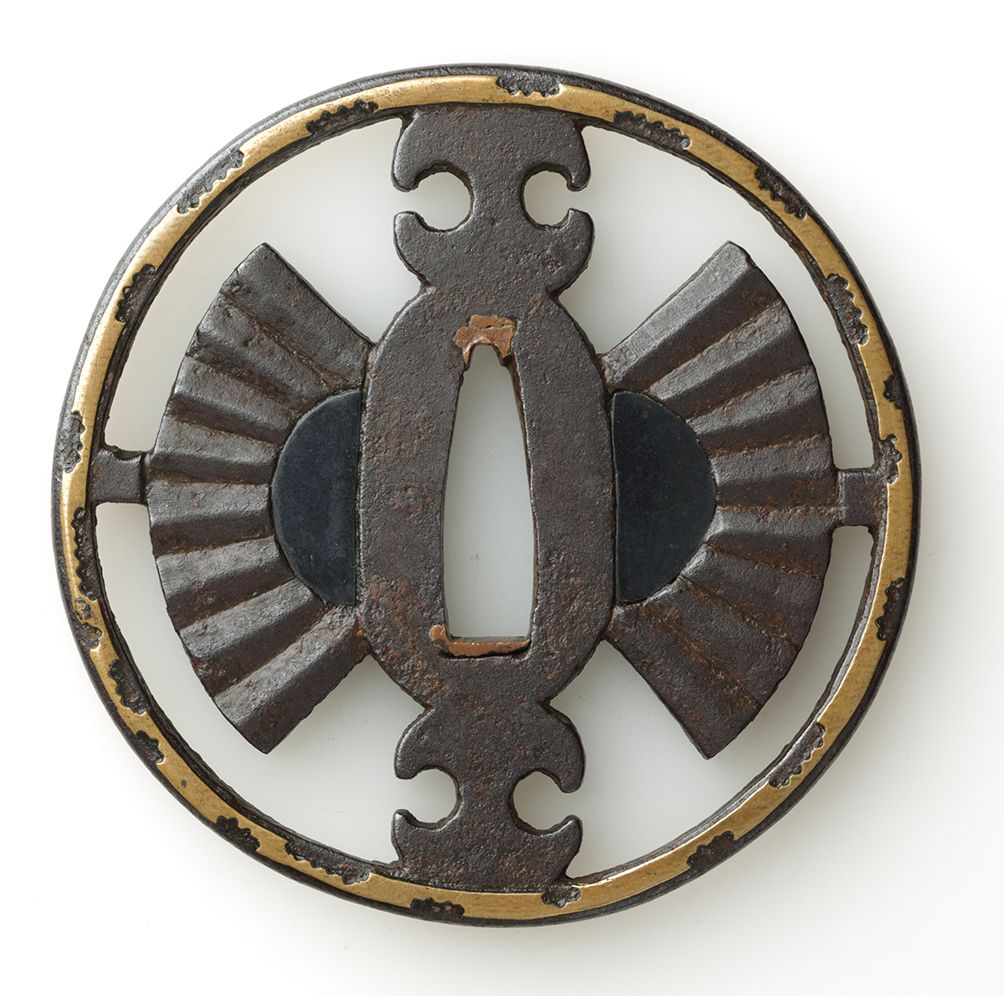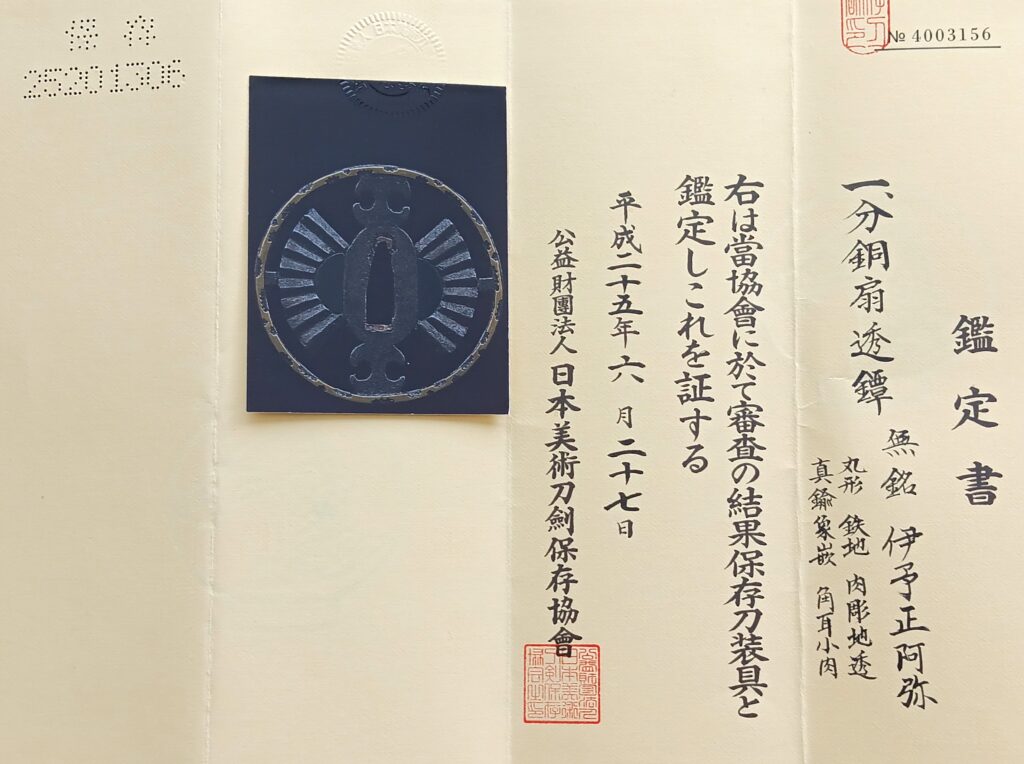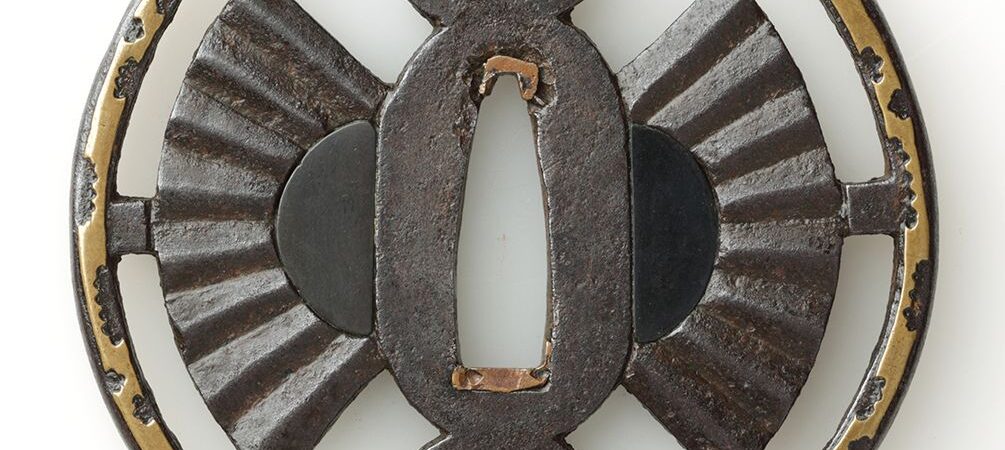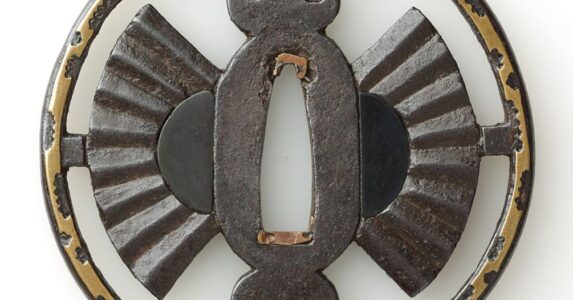HOLD 一般情報 General information
|
製品番号 Product No. |
TS-24. |
|
項目種類 Item type |
京正阿弥鍔 Kyo-Shoami Tsuba |
|
無銘 MUNEI |
に帰属: 藤四郎 [六代] Attributed to: Tōshirō 6th gen. [Rokudai] |
|
形状 Shape. |
丸形 角耳小肉. Murugata, Kakumimi-koniku |
|
画像 Image. |
分銅扇透鐔 Weight and folding fan illustration |
|
櫃穴 Hitsu ana |
両櫃孔埋 Both ana holes, (笄櫃穴 Kogai hitsu ana, 小柄櫃穴 Kozuka hitsu ana), are filled 両櫃孔埋 |
|
時代 Era |
江戸時代初期 Early Edo periode |
|
日付 Date |
ca. 1740-1750 |
|
伝 Den/School |
に帰属: 伊予正阿弥-伝 Attributed to: Iyo Shô-ami-den/school |
|
|
|
|
|
寸法 Measurements
|
身長 Height |
79.4 mm |
|
幅 Width |
79.9 mm |
|
厚さThickness (egde) |
5.7 mm |
|
重量 Weight |
123 gr. |
|
|
|
|
|
詳細 Details
|
物質 Material |
鉄地に, 真鍮 Iron base, brass |
|
技術 Technique |
肉彫地透 , 真鍮象嵌. Nikubori-ji-sukashi openwork, Brass inlay shinchû-zôgan |
|
|
|
|
|
|
鑑定書 Kantei-sho
|
日本美術刀剣保存協会 NBTHK Certificate |
保存刀装具鑑定書 Hozon Tosogu certificate |
|
他の 証明書 Other certificate |
適用外です Not applicable |
|
状態 Status |
上工 Jōkō Superior |
|
|
|
|
|
|
|
追加情報 Additional Information |
The judgment on the authentic as expressed in the description above was confirmed by “Nippon Bijutsu Tōken Hozon Kyokai” (NBTHK) issuing a Tsuba 保存刀装具鑑定書 Hozon Tosogu certificate: number: 4003156 Provided on平成二十五年六月二十七日. Heisei ni jû go nen rokû gatsu ni jû shich hi. June 27th, 2013. (27-06-2013) Explanation: An almost round shape tidy, on the edge Fuchi part has been shaven part by part so that brass inlay arranged in worm-eaten pattern. Arranging weights upper and lower part, folding fan left and right. They are expressed by 肉彫地透 Nikubori-ji-Sukashi technique この鍔は刀に相応しい This tsuba is suitable for a Katana |
|
|
|
|
|
|
|
歴史 History |
A peaceful Tsuba. It was said that 伊予正阿弥 Iyo Shô-ami school was began when加藤嘉明 Katô Yoshiaki, one of high class commander of 豊臣秀吉 Toyotomi Hideyoshi, assigned to 伊予松山 Iyo Matsuyama in 慶長 八年, Keicho-Hachi 8st (1603), inviting 京翔アミ Kyo Shôami school Tsuba smith Iyo-Shoami-den One hears that the Iyo-Shoami school existed from very early times. They are thought to have struggled with the Kyo-Shoami workers for leadership of the Shoami family. There does not seem to be any documentation to support the idea that the Iyo-Shoami school is older than any other branch school. It is more likely that it was formed at the same time as the other schools that were dispersed to the provinces. If any branch school may be considered anterior to the others it would have to be the Kyo-Shoami school, for they were the direct descendants of the Ko-Shoami and remained at the capital All other Shoami schools were formed slightly later than the Kyo-Shoami in the early Edo age. The majority of work of the Iyo-Shoami school is in low relief carving, line carving, flat inlay, large areas of raised inlay, or mixed inlay. The common characteristic of most Shoami schools, i.e. nunome inlay, is rarely found in the work of this school. In essence the style is simple, naive and has a country feeling. Nevertheless, it is not without interest |
価格 price HOLD (Shipping fee is not included in the price).
PS: More photos available on request!
